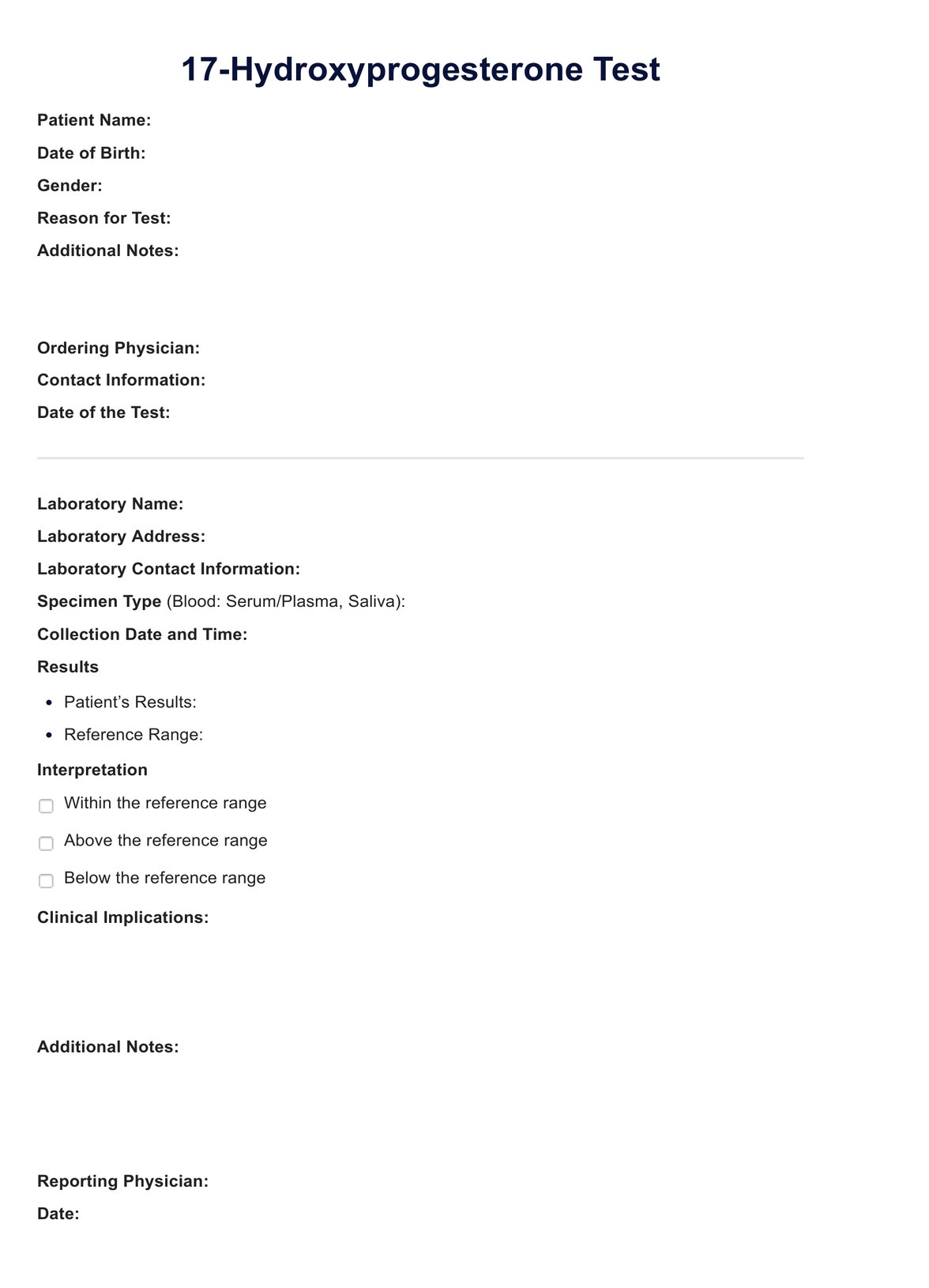Genetic counselors, pediatricians, and pediatric specialists are the ones who typically request a 17-Hydroxyprogesterone Test.

17-Hydroxyprogesterone
Our guide will help you understand how the 17-Hydroxyprogesterone test can be used, its results interpreted, etc. For more details and a template, go here.
Use Template
17-Hydroxyprogesterone Template
Commonly asked questions
The 17-Hydroxyprogesterone tests are used during every step of patient care, from diagnosing to monitoring one??s treatment.
The turnaround time for the 17-Hydroxyprogesterone test is typically 3-6 days. However, for some laboratories, one can get the results within 24 to 36 hours.
EHR and practice management software
Get started for free
*No credit card required
Free
$0/usd
Unlimited clients
Telehealth
1GB of storage
Client portal text
Automated billing and online payments











